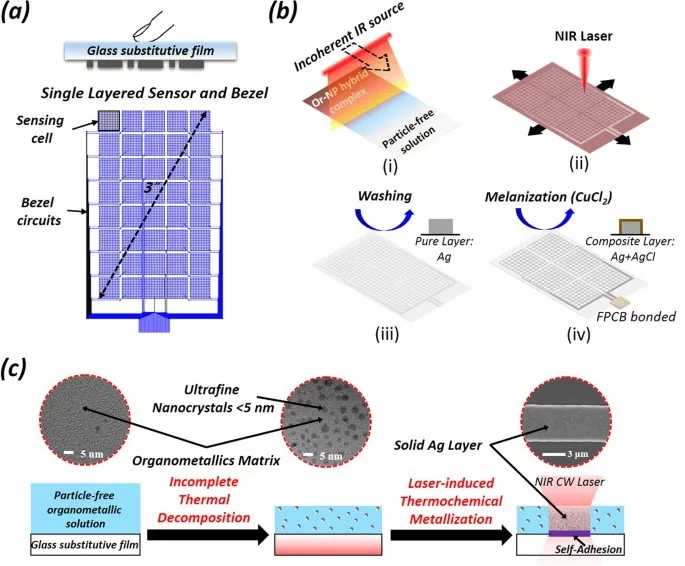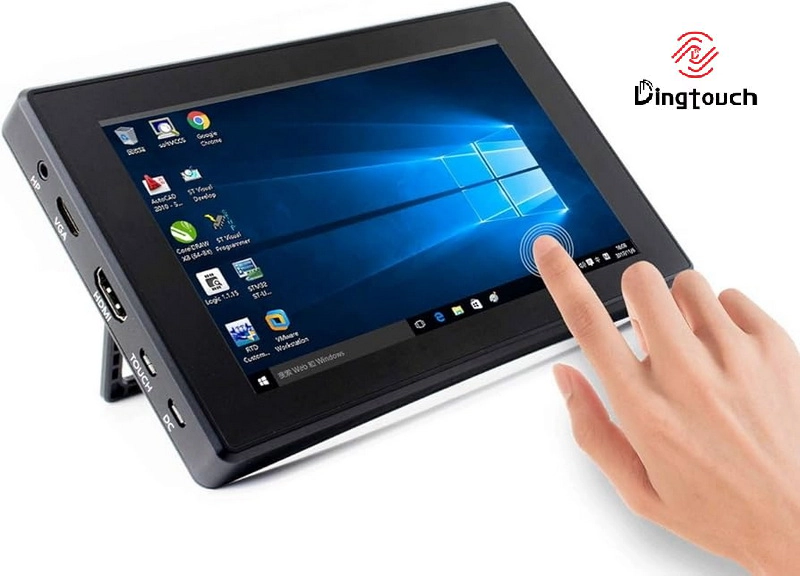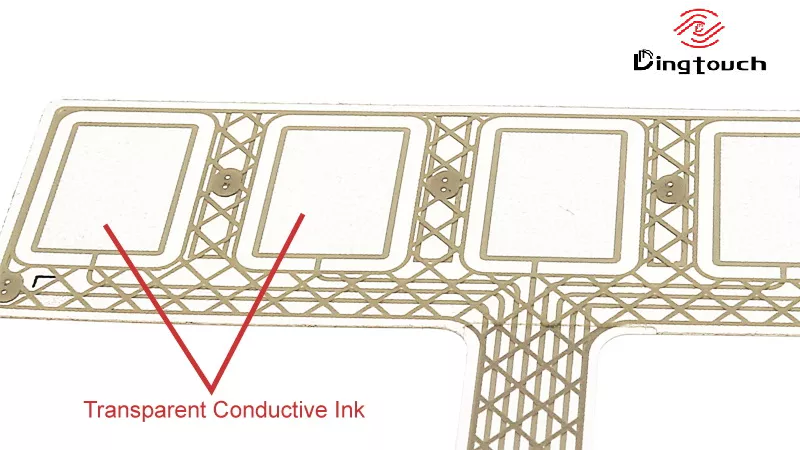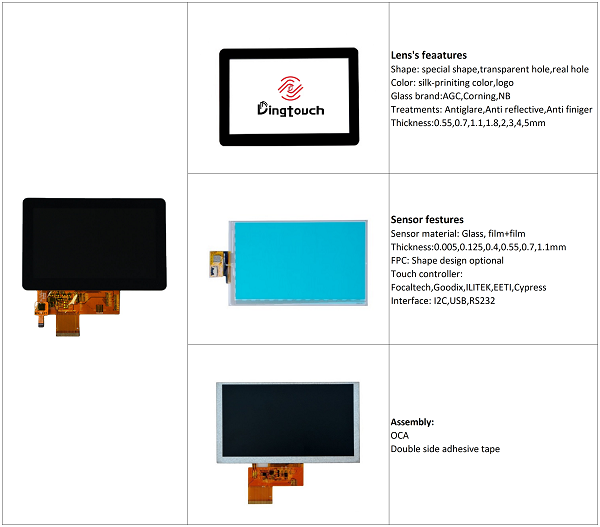News
How Are Capacitive Touch Screen Transparent?
How Are capacitive touch screen Transparent?
Content Menu
● Understanding Capacitive Touch Technology
>> Types of Capacitive Touch Screen
● Materials Behind Transparency
● How Transparency Is Achieved
● Working Principle of Capacitive Touch Screen
● Applications of Transparent Capacitive Touch Screen
● Advantages of Capacitive Touch Screen
● Future Trends in Transparent Touch Screen Technology
>> 1. What are the main differences between resistive and capacitive touch screen?
>> 2. How does Indium Tin Oxide contribute to transparency in touch screen?
>> 3. Can capacitive touch screen work with gloves?
>> 4. What industries benefit from transparent capacitive touch technology?
>> 5. What challenges do manufacturers face when producing transparent capacitive touch screen?
Capacitive touch screen have become a staple in modern technology, found in smartphones, tablets, and various interactive devices. Their ability to detect touch while maintaining a high level of transparency is a remarkable feat of engineering. This article explores the principles behind capacitive touch screen, the materials used to achieve transparency, their applications in various industries, and the future of this technology.
Understanding Capacitive Touch Technology
At its core, capacitive touch technology relies on the electrical properties of the human body. When a finger touches the screen, it alters the electrostatic field created by a layer of conductive material beneath the screen surface. This change in capacitance is detected by the device, allowing it to register the touch.
Types of Capacitive Touch Screen
There are primarily two types of capacitive touch screen:
- Surface Capacitive: This type uses a single layer of conductive material on one side of the insulator. It can detect touch but is limited to single-touch inputs.
- Projected Capacitive (PCAP): This more advanced technology employs a grid of electrodes on multiple layers. It allows for multi-touch capabilities and greater accuracy, making it widely used in smartphones and tablets.
Materials Behind Transparency
The transparency of capacitive touch screen is largely attributed to the materials used in their construction. The most common material is Indium Tin Oxide (ITO), which serves as a transparent conductive layer.
- Indium Tin Oxide (ITO): ITO is a transparent conductive oxide that boasts high transparency (up to 90%) and excellent electrical conductivity. It can be deposited as a thin film on glass or plastic substrates through processes such as sputtering or chemical vapor deposition. The unique properties of ITO stem from its electronic structure; it is a heavily doped n-type semiconductor where tin atoms act as dopants in the indium oxide lattice. This results in a high concentration of free electrons, giving ITO its conductive properties while allowing visible light to pass through.
- Polyethylene Terephthalate (PET): Often used as a protective layer, PET film is flexible and durable while maintaining high transparency. It can be laminated onto capacitive screen to enhance durability without compromising visibility.
- Metal Mesh Technology: An alternative to ITO, metal mesh technology uses ultra-fine metal wires (often made of copper or silver) arranged in a grid pattern to create a transparent conductive layer. This method offers higher conductivity and flexibility compared to ITO, making it suitable for applications requiring bendable displays.
- Silver Nanowires: These incredibly thin silver wires form a conductive network when randomly distributed on a substrate. Silver nanowires provide excellent conductivity and flexibility, making them suitable for both rigid and flexible touch screens.
- Graphene: A promising next-generation material for capacitive touch screen, graphene consists of a single layer of carbon atoms arranged in a hexagonal lattice. Its exceptional electrical conductivity, optical transparency, and flexibility make it an attractive option for future touch screen technologies.
How Transparency Is Achieved
The design and layering of capacitive touch screen are crucial for achieving transparency:
1. Layering: The screen consists of multiple layers: a protective outer layer, a conductive layer (like ITO), and an insulating layer. The arrangement allows light to pass through while still detecting touch.
2. Electrode Design: In projected capacitive screen, electrodes are arranged in a grid pattern. This design minimizes obstruction while maximizing sensitivity to touch events.
3. Backlighting Considerations: Unlike traditional displays that rely on backlighting for visibility, transparent displays often utilize OLED or transparent LCD technologies that can display images without obstructing light from behind.
Working Principle of Capacitive Touch Screen
When a finger approaches or touches the screen, it disturbs the electrostatic field created by the conductive layer:
- Capacitance Change: The presence of a finger alters the capacitance at that point on the screen. This change is detected by sensors embedded in the screen.
- Touch Location Detection: The system calculates the location of the touch based on changes in capacitance across multiple electrodes, allowing for precise location tracking.
The working principle involves several key components:
- Electrodes: The electrodes are typically arranged in rows and columns forming an X-Y grid. Each intersection point can detect changes in capacitance when touched.
- Controller Chip: This chip processes signals from the electrodes and determines where on the screen the user has touched based on changes in capacitance.
Applications of Transparent Capacitive Touch Screen
Transparent capacitive touch screen have numerous applications across various sectors:
- Retail Displays: Used in advertising and interactive kiosks, these screen allow customers to engage with content while still seeing products behind them.
- Automotive Interfaces: Transparent displays can be integrated into car windows or dashboards, providing information without obstructing visibility.
- Smart Home Devices: These screen can be embedded into walls or appliances, offering intuitive control interfaces that blend seamlessly into home environments.
- Augmented Reality (AR): Transparent displays enhance AR experiences by overlaying digital information onto real-world views.
- Medical Devices: In healthcare settings, capacitive touch screen are used for patient monitoring systems and diagnostic equipment due to their hygienic surfaces and ease of use.
Advantages of Capacitive Touch Screen
capacitive touch screen offer several benefits that contribute to their widespread adoption:
- High Sensitivity: They respond well to light touches, providing a smooth user experience.
- Multi-Touch Capability: Users can perform gestures like pinch-to-zoom or swipe with multiple fingers simultaneously.
- Durability: With solid glass surfaces, they are resistant to scratches and wear.
- Aesthetic Appeal: The sleek design allows for thinner devices with larger display areas compared to traditional button interfaces.
Challenges and Limitations
Despite their advantages, transparent capacitive touch screen also face challenges:
- Cost: The materials and technology involved can make these screen more expensive than traditional options.
- Environmental Sensitivity: Performance may vary under different lighting conditions or when exposed to moisture or dust.
- Glove Compatibility: While some advancements have been made to allow for glove use with certain types of capacitive screen, not all models support this feature effectively.
Future Trends in Transparent Touch Screen Technology
As technology advances, we can expect further innovations in transparent capacitive touch screen:
- Enhanced Materials: Newer materials may provide better conductivity and transparency while reducing costs.
- Integration with Other Technologies: Combining transparent displays with augmented reality or virtual reality could lead to more immersive user experiences.
- Wider Adoption Across Industries: As costs decrease and performance improves, we may see these technologies adopted in more sectors beyond consumer electronics.
Conclusion
capacitive touch screen exemplify how modern technology can blend functionality with aesthetics. Their ability to remain transparent while providing interactive features has opened up new possibilities across various industries. As advancements continue, we can expect even more innovative applications that leverage this technology's unique capabilities. The future looks promising as research continues into new materials like graphene and silver nanowires that could further enhance performance while maintaining transparency.
Related Questions
1. What are the main differences between resistive and capacitive touch screen?
capacitive touch screen use electrical properties to detect touch and support multi-touch gestures, while resistive screens rely on pressure and typically only detect one point at a time.
2. How does Indium Tin Oxide contribute to transparency in touch screen?
ITO provides high electrical conductivity while maintaining up to 90% optical transparency, allowing for clear visibility through the display.
3. Can capacitive touch screen work with gloves?
Projected capacitive screen can detect touches through certain types of gloves due to their sensitivity; however, standard surface capacitive screens usually cannot.
4. What industries benefit from transparent capacitive touch technology?
Industries such as retail, automotive, smart home technology, healthcare, and augmented reality benefit significantly from this technology due to its interactive capabilities combined with transparency.
5. What challenges do manufacturers face when producing transparent capacitive touch screen?
Manufacturers face challenges related to cost, environmental sensitivity (like performance under varying lighting), ensuring durability without compromising transparency, and achieving reliable performance across different conditions.
DINGTouch: Committed to continuous innovation and improvement of product quality to meet customers' high requirements and expectations.
DINGTouch is a manufacturer that provides high quality touch screen panels. Focus on the design, manufacturing and sales of touch screen panels, and are committed to providing customized solutions that satisfy customers.
DINGTouch: In the process of customizing touch screen panels, we focus on close cooperation and communication with customers. Understanding customers' needs and providing customized solutions will meet customers' individual needs. The company's products are favored by customers for their high quality and reliability, and provide them with the best touchscreen panel solutions.
At DINGTOUCH, we are the world's leading touchscreen manufacturer, helping businesses around the world take advantage of this exciting technology. For more information, please visit the home page now.
Find the DINGTouch technical team to achieve the success of your company's new project.
How to choose touch screen customization?
DINGTouch is a company specializing in the R&D and production of touch screen technology, headquartered in Shenzhen, China. As a professional touch screen supplier, DINGTouch is committed to providing high-quality, stable and reliable touch screen products to meet the diverse needs of customers. We continue to carry out technological innovation and product optimization to ensure that its touch screen products have good sensitivity, accuracy and durability.
In addition to the products themselves, we also focus on cooperation and communication with customers, and are committed to providing customized solutions and excellent after-sales services. Through continuous efforts to improve product quality and customer satisfaction, we have established a good reputation in the touchscreen industry and won widespread market recognition.
What DINGTOUCH can do:
• PCAP maximum size 65”
• Multi-touch (Touch screen can be customized to your needs.)
• Optical bonding service/air bonding
• LCD interface: HDMI/RGB/MIPI/LVDS/EDP, etc.
• PCAP interface: IIC/USB interface
• CTP can customize the cover glass surface treatment process AG (anti-glare), AR (anti-reflection), AF (anti-fingerprint), waterproof, and glove touch
• Supports 0.55 mm-12 mm coverslip touch.
• Support operating temperature: -40℃-90℃.
Dingtouch Industrial Capacitive Touch Screen Manufacturer
In conclusion, Dingtouch as a professional touch screen manufacturer with more than 10 years touch screen experience.We have many capacitive touch screen. Such as5 inch touch screen,7 inch touch screen,10.1inch touch screen,15 inch touch screen,15.6 inch touch screen,17 inch touch screen,18.5 inch touch screen,19 inch touch screen,21.5 inch touch screen,32 inch touch screen, However, we also welcome to customize your own touch screen . Contact our team today to learn what capacitive touch screen are best for our retail business needs.
Contact us NOW! sales@szdingtouch.com

CATEGORIES
CONTACT US
Contact: Dingtouch
Phone: +8615815536116
Tel: +8615815536116
Email: sales@szdingtouch.com
Add: Building A, Bailu Plaza, No. 48, Gonghe Industrial Road, Gongle Community, Xixiang Street, Baoan District, Shenzhen,China. 518126








 Dingtouch
Dingtouch